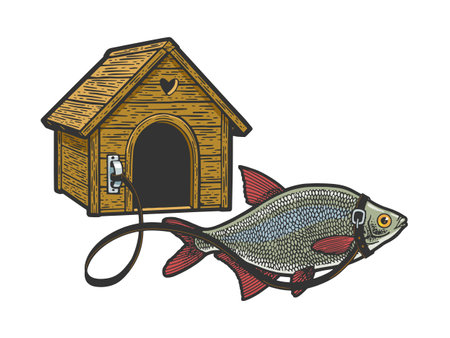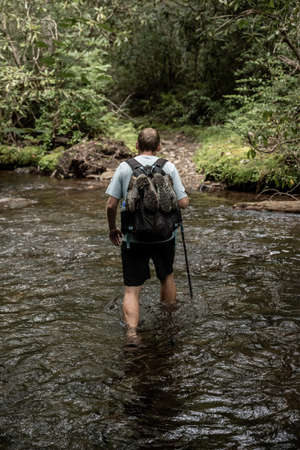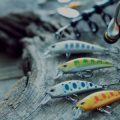Choosing the Right Tackle Box
When it comes to packing for a backpacking or remote fishing trip, selecting the right tackle box is your first crucial step. You’ll want something that’s both lightweight and durable—think of materials like tough plastic or even waterproof fabric organizers with sturdy zippers. Traditional hard-sided boxes can be too bulky and heavy, so consider compact, soft-sided options or minimalist tackle trays that slip easily into your pack. Size matters: aim for just enough space to hold your essentials without adding unnecessary weight. Look for smart internal organization, such as adjustable dividers or mesh pockets, to keep your lures, hooks, and other gear neatly in place. For American anglers who hike into remote lakes and streams, portability is key—a box with a secure latch or reliable zipper ensures nothing spills out on rugged trails. Some brands even offer waterproof models, which can be a game changer if you’re facing unpredictable weather or need to cross streams. Ultimately, the best tackle box for backpacking is one you barely notice until it’s time to fish: compact, organized, and built to withstand the wild.
Essential Tackle for Remote Fishing
When you’re heading into the backcountry, every ounce in your pack matters. Packing a compact yet versatile tackle box is all about choosing gear that serves multiple purposes and adapts to different conditions. The goal is to be prepared for anything from trout streams in the Rockies to bass ponds in the Midwest, without weighing yourself down. Below are my recommendations for essential tackle items that strike a balance between minimalism and versatility.
Lures: Go-To Choices for Multiple Species
For remote fishing, select lures that mimic common forage and work across species. Here’s a quick-reference table:
| Lure Type | Best For | Notes |
|---|---|---|
| Inline Spinners (1/8 – 1/4 oz) | Trout, Bass, Panfish | Effective in streams & small lakes; easy to cast |
| Soft Plastics (Grubs/Worms) | Bass, Walleye, Perch | Rig with jig heads or Texas-style for versatility |
| Spoons (Small-Medium) | Trout, Pike, Bass | Works in both moving and still water; durable |
Hooks: Variety Without Bulk
A small selection of hooks goes a long way. Bring assorted sizes (#6-#10) for live bait or soft plastics. Circle hooks are great if you plan to practice catch-and-release—less likely to gut-hook fish.
Weights and Terminal Tackle
Split shot weights are lightweight and adjustable, perfect for quick depth changes. Add a few small swivels to prevent line twist when using spinners or spoons. Don’t forget a couple of snap swivels for fast lure changes.
Suggested Terminal Tackle Kit
| Item | Recommended Quantity |
|---|---|
| Split Shot Weights (assorted sizes) | 10-12 pcs |
| Snap Swivels (small-medium) | 4-6 pcs |
| Bait Hooks (#6-#10) | 8-10 pcs (mixed sizes) |
Other Must-Have Basics
- Nippers or small scissors for cutting line
- A couple of bobbers/floats for live bait fishing or suspending lures over weeds
- A mini multi-tool or needle-nose pliers for hook removal and quick repairs
- A tiny spool of extra line (4-8 lb test covers most needs)
- A waterproof box or zip bag to keep everything dry and organized
Packing Tip:
Aim to fit all items into a single small box—think Altoids tin size for ultralight trips or a compact plastic tackle case for more variety. Prioritize gear that’s proven on your target waters but can also adapt if conditions change or new species show up.

3. Smart Packing Techniques
When it comes to packing a compact tackle box for backpacking or remote fishing trips, the key is maximizing every inch of available space while keeping weight at a minimum. Efficient organization can make the difference between a smooth outdoor adventure and a frustrating one. Start by compartmentalizing your tackle box: use small, sealable containers or adjustable dividers to separate lures, hooks, sinkers, and swivels. This prevents items from tangling or spilling and makes finding what you need quick and hassle-free.
Prioritize Multi-Use Items
Opt for gear that serves multiple purposes to reduce redundancy. For example, select lures that work for various species or conditions, such as soft plastics that can be rigged in different ways or spoons that attract both trout and bass. Consider tools like a multi-tool that incorporates pliers, scissors, and a knife instead of carrying each separately.
Stacking and Layering for Space Efficiency
Arrange your gear by frequency of use—store essentials on top for easy access and less-used items at the bottom. Roll up leaders and small lengths of line to save space. If you carry small bottles of scent attractant or bait, choose leak-proof travel sizes and tuck them into corner compartments.
Think Lightweight and Durable
Only pack what you’re likely to use based on your target species and local conditions. Leave behind bulky specialty gear unless absolutely necessary. Replace heavier items with lighter alternatives whenever possible—for instance, swap out metal tackle boxes for tough plastic ones and opt for lightweight bobbers or split shot.
By applying these smart packing strategies, you’ll keep your load light and organized, making those long hikes to remote fishing spots much more enjoyable—and increasing your chances of landing a great catch once you get there.
4. Maintaining Tackle in the Backcountry
Keeping your fishing tackle in top shape during extended backpacking or remote fishing trips is essential for both performance and longevity. Moisture, dirt, and exposure to the elements are common challenges in the backcountry, often leading to rusted hooks and damaged gear. Here’s how to keep your tackle dry, organized, and rust-free when you’re far from civilization.
Protecting Your Gear from Moisture
Water is the enemy of most fishing gear—especially metal lures, hooks, and swivels. To minimize moisture exposure:
- Use Resealable Zip Bags: Store soft plastics, spare line spools, and even lures in sturdy zip-top bags. These keep water out while providing easy access.
- Add Silica Gel Packets: Toss a few silica gel packets into each compartment or bag. They absorb ambient moisture and help prevent rust on metal components.
- Choose Waterproof Containers: Invest in compact waterproof tackle boxes or cases with rubber seals. These are especially useful if you expect rain or stream crossings.
Quick Reference Table: Tackle Protection Methods
| Protection Method | Best For | Pro Tips |
|---|---|---|
| Zip Bags | Soft baits, spare line, small accessories | Double-bag items that get wet often |
| Silica Gel Packets | Lures, hooks, any metal gear | Replace packets every few days for long trips |
| Waterproof Containers | Lures, terminal tackle, electronics (like small scales) | Test seal before trip; pack extra O-rings if possible |
Field Maintenance Tips
- Avoid Opening Boxes in Rain: If you must access your gear during a downpour, use a poncho or tarp as cover to avoid water getting inside your containers.
- Dry Gear Each Night: At camp, open your tackle box and bags so air can circulate. This lets trapped moisture escape and helps dry any damp items.
- Cull Wet Items Immediately: If a lure or hook gets wet, remove it from the main box and let it dry separately before returning it.
Why It Matters for Remote Fishing Success
In remote settings, replacement gear is miles away—or simply unavailable. Taking a few proactive steps to keep your tackle dry ensures you’ll have reliable equipment every time you cast. It also saves weight by reducing the need for backups due to preventable rust or water damage. With these simple but effective strategies, your compact tackle box will remain ready for action throughout your entire backcountry adventure.
5. Safety and Regulations
When packing a compact tackle box for backpacking or remote fishing trips, safety and compliance with local regulations are just as important as the gear you bring. Being prepared can make all the difference when you’re far from help in the backcountry.
Essential Safety Gear
Always include a pair of sturdy pliers in your tackle box. They’re not only for hook removal but also for cutting line or handling sharp objects safely. A small, waterproof first aid kit is crucial—think adhesive bandages, antiseptic wipes, tweezers, and any personal medications. If space allows, pack a whistle and a mini flashlight or headlamp; both are valuable in emergencies or low-light situations.
Licenses and Local Rules
Before you hit the trail, double-check that your fishing license is valid for the state or region you’re visiting. Many wilderness areas have unique rules about catch limits, bait types, or even restricted zones to protect local wildlife. Keep a digital copy of your license on your phone if possible, and print one out as backup. Familiarize yourself with posted signs at trailheads or lakes—rangers frequently update them with seasonal regulations.
Leave No Trace
Always follow Leave No Trace principles: pack out all trash, avoid introducing invasive species by cleaning your gear between trips, and respect wildlife by maintaining a safe distance. These habits not only preserve the environment but also ensure that future anglers can enjoy these remote spots.
Pro Tip
Store all safety gear and paperwork in a resealable waterproof bag within your tackle box. This keeps essentials organized and protected from unexpected weather or accidental dips in the water.
6. Extra Tips for American Backpackers
When you’re backpacking and fishing in the U.S., a little local know-how goes a long way. Here are some insider tips to help you pack smart, fish responsibly, and enjoy your trip while respecting America’s wild places.
Leave No Trace: Protect the Waters You Love
Always follow Leave No Trace principles. Pack out every piece of trash—including used fishing line, snack wrappers, and even broken lures. Micro-trash is easy to overlook but can harm wildlife and spoil pristine areas for others. Use a small resealable bag or dedicated trash pocket in your tackle box.
Know the Rules: Regional Regulations Matter
Fishing regulations can change dramatically from state to state, and even between different public lands like national forests or BLM areas. Before heading out, check for permit requirements, size and bag limits, or seasonal closures on official state fish and wildlife websites. Carry a digital or printed copy of your license and any special permits.
Respect Native Species
Some waters host threatened or endangered species. Learn to identify native fish so you can practice proper catch-and-release techniques if required. Barbless hooks may be mandatory on certain rivers—be prepared with compliant gear.
Consider Local Conditions
In the Rockies, sudden thunderstorms can raise stream levels quickly—pack waterproof bags for your tackle box and electronics. In the Southwest, heat and sun exposure are major concerns; include sunscreen and a brimmed hat in your kit. Mosquitoes in the Midwest? Don’t forget bug spray!
Share the Space
Popular public lands see lots of use. Give fellow anglers plenty of room, avoid crowding prime spots, and be courteous on narrow trails by yielding to hikers passing through.
Final Word: Stewardship is Part of the Adventure
Packing light isn’t just about convenience—it’s also about minimizing your impact on fragile ecosystems. By preparing thoughtfully and following these extra tips, you’ll help ensure that America’s backcountry remains wild and beautiful for generations of anglers to come.


